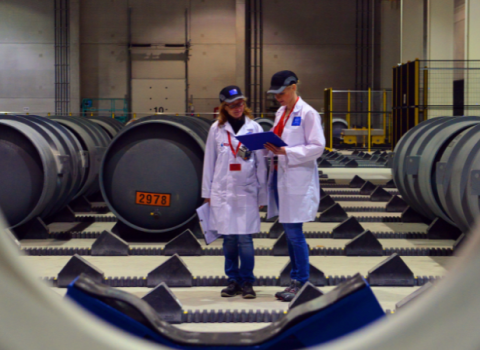The European Defence Agency has started to flesh out the details of the EU’s move into defence R&D, with Denis Roger, EDA Director of European synergies and innovation telling Science|Business, “The new defence preparatory action will be very different from Horizon 2020.”
Elaborating on plans presented by the European Commission last week, Roger said, “It will be sui generis, with specific rules of engagement, model grant agreements and work programmes. Everything will be tailor-made.”
Like Horizon 2020, projects will be invited by calls for proposals, to be announced once a year, and awarded to groups made up of at least three independent entities from three different EU countries.
The main project funded each year will be a new technology demonstrator, though Roger declined to specify any topics.
Prototypes could be “dual-use”, he said. For example, a drone used to watch out for migrants at sea or fires on land could also be used for military purposes.
Border surveillance, both on land and at sea, is a big priority for European governments, Roger said, with the continent struggling to cope with refugees fleeing war and failing states in the Middle East and North Africa.
Depending on the sensitivity of the research topic, applicants may need security clearance. “We don’t anticipate classified calls but we do foresee some classified bids,” said Roger.
Access to the programme will be limited to EU members, with Norway, an associate member of the EDA, the only non-EU country being considered for inclusion.
Denmark chooses to opt out of EU defence cooperation, but its industry and researchers will be permitted access to the pilot.
Another few months are needed to finalise work programmes, Roger said. The aim is to publish the first competition by the middle of next year. The set of proposals must also be approved at next week’s summit of European leaders in Bratislava.
There will be €25 million funding next year, with €65 million requested for 2018-2020. Officials hope the sum could eventually increase to €500 million a year between 2021 and 2027.
The EDA has already distributed some money.
In October, it allocated €1.4 million for three projects due to run until 2018. There is Portuguese-led research into sensors that help soldiers detect enemy troops inside buildings in urban conflict and Dutch and German-led research into border surveillance by drones, including by “swarms” of small, autonomous aircraft.
Bigger involvement of member state governments
In the new pilot, national governments will have a more hands-on approach than in Horizon 2020. “The civil innovation market is defined by consumers. In defence, you only have one buyer: governments,” said Roger.
Defence ministries will have a big say in setting research topics and even some input into “validating results”.
“If defence ministries are not in the loop, nothing happens,” said Roger.
The rules for accessing research results will be different from Horizon 2020.
“They will be totally different [and operate] on two levels. The first level, accessible for everyone, will not include sensitive information, whereas the second level will only be available to a group of member states that commit to fund [the product] further,” Roger said.
The Commission may block the licensing or sub-licensing of a product to another entity based outside the EU, on security or commercial grounds.
Deeper push
The EDA is now central to the EU’s biggest push on defence in over a decade.
In addition to new military research, the Commission intends to create and run a €5 billion cross-border procurement fund for joint military equipment like helicopters and armoured vehicles.
Commission officials have previously said EU-backed military research was “almost inconceivable a few years ago”.
Brexit has flipped the situation. The UK has long rejected the idea of enhanced military cooperation, concerned that it would be expensive, duplicate things that NATO is much better equipped to do and lay the ground for an eventual EU army - a notion dismissed as alarmist in Brussels.
The election of Donald Trump in the US has also given impetus to the push for efforts to build what officials call Europe’s “strategic autonomy,” an ability to act independently of other major powers.
Trump has warned European allies to stop cutting their military budgets, suggesting that the US would think twice about coming to the aid of any EU country under attack if it had not paid its "fair share".
Only five of the EU’s 28 members meet the target of spending 2 per cent of gross domestic product on defence.





 A unique international forum for public research organisations and companies to connect their external engagement with strategic interests around their R&D system.
A unique international forum for public research organisations and companies to connect their external engagement with strategic interests around their R&D system.